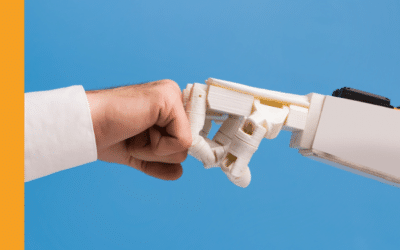No matter what industry your organisation occupies or how many members of staff you employ, training can afford extensive advantages. But while some still view this as an uninspiring or unavailing exercise, the range of learning and development options currently available mean that training can now be interesting, engaging, enjoyable, and above all else, rewarding.
For numerous businesses, these plus points can’t come soon enough. The rapid advancement of technology coupled with the need for employees to posses a wide range of dynamic skills has meant training now plays an increasingly crucial role in the world of modern business.
Traditional training is now long gone, as you can’t afford to simply ask employees to tick which answer they think is correct. We now live in a digital society where workers want to learn from interactive teaching materials that are hosted on platforms they already know and understand.
But although these training solutions already exist, the challenge comes when trying to choose the one that’s right for you. With this in mind, here is what you need to consider with training in the 21st century.
Understanding the different elements of training
In order to be truly effective, training must marry the following elements together in perfect harmony.
Content – Essentially the skills, information, or subjects you are trying to teach employees. But as opposed to implementing lengthy courses that are difficult to digest in one-go, think about adopting microlearning instead. This delivers training in clear and concise bite-sized chunks, which not only match the consumption habits of contemporary learners but also enhances long-term memory retention.
Technology – Although it might be tempting to fully exploit the potential of technology, you should keep things simple because this will result in better retention and user engagement. De-clutter the platform your training is presented on but don’t forget about mobile optimisation or performance measurement tools.
Expertise – You may feel like managing your training activity in-house, but most of the time it is better to enlist the services of a learning partner. With huge expertise about their system capabilities and how they can best work for your business, these firms will become remote members of your own team and soon start designing tailor-made solutions.
Things your training solution should accomplish
Once you have worked alongside an adept learning partner to create appropriate teaching content and made this available on a simple yet technologically advanced platform, your focus should shift towards achieving certain accomplishments. These concern:
Onboarding
Seeing as 90 per cent of employees decide whether to stay at their company for the foreseeable future within the first 6 months, onboarding should be more than just a brief orientation.
Use this opportunity to introduce them to your company culture and make them feel as comfortable as possible. Fail to do so and your recent recruits will think negatively of their new employers from the get-go.
After all, people remain the lifeblood of most organisations and their contribution to daily operations when compared to digital technologies that come and go is invaluable. So, give new hires an introduction to what the company is all about before delving into more specific job-role knowledge.
Training
Before technology took over nearly every aspect of society and transformed the way we consume information, training was an unwavering and never-changing fixture in the workplace. But this is no longer the case.
Owing to the fact that half of an individual’s digital skillset becomes obsolete in two and a half years, you must provide your workforce with accessible, flexible, and effective training that ensures members of staff are always equipped to perform.
This might seem like a time-consuming and expensive activity, but microlearning allows you to introduce new skills or subjects in gradual stages. With greater expertise and ability, your workforce will then be more productive and engaged in their individual roles but also when training takes place too.
Support
Simply presenting a new training course or module to your employees and assuming they will figure it out eventually is not good enough. Each and every member of staff should have access to support whenever and wherever they need it, which doesn’t include conducting an online search for answers.
After all, research from Gottfredson and Mosher suggests that performance support benefits three of the five moments of learning need – apply, solve, and change.
Give your employees the power to take control of their own learning experience by developing support tools that feature appropriate answers and additional expertise from familiar sources.
Development
After initial onboarding, continual training, and progressive support, employees will eventually enter a stage of development where they can start gaining leadership, management, and professional skills.
But managing to get to this stage is no mean feat, as two-thirds of companies around the world consider themselves weak at developing millennial leaders. Therefore, you will need to create an energetic yet curated learning system where employees know what is required of them to climb the career ladder.
Not only can you retain more employees by prioritising development, you will also benefit from a more competent workforce that feels recognised and respected. These same employees will also feel empowered to take on new learning challenges too.
Compliance
Finally, you must ensure that all your efforts thus far lead to compliance. There will be little to no point in training if members of staff cannot apply their newly acquired knowledge in the actual workplace.
Therefore, be certain that training content speaks specifically to your employees’ individual job roles, especially those in higher-risk business units or areas with lots of regulation.
Remember that training with job and company relevant scenario leads to 47 per cent less misconduct than training with unrealistic scenarios. So, move away from off-the-shelf solutions and conduct role-specific training.
By understanding the different elements of modern-day training and always having certain accomplishments in mind, you should be able to develop or adopt a solution that is right for you.





